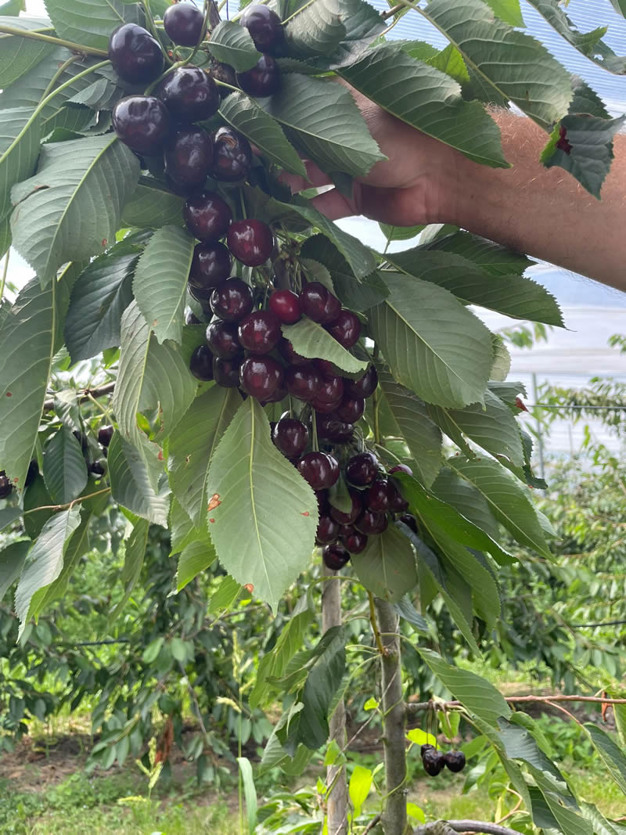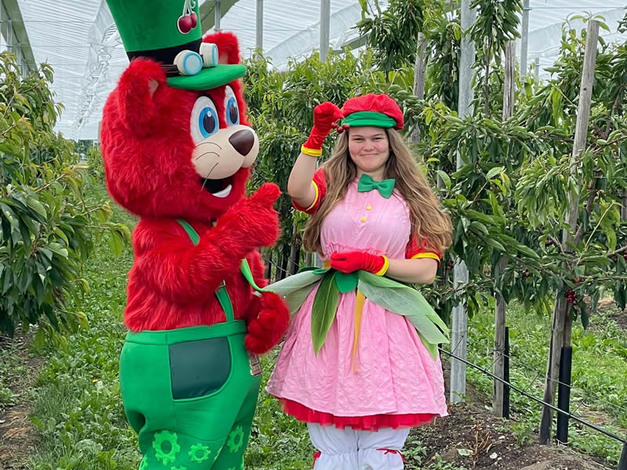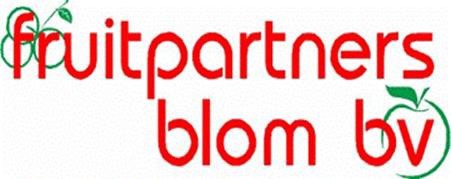For two weeks now, tasty cherries have been back in farm stalls along country roads in the Netherlands. "They're of outstanding quality this year, but there are fewer kilos. That's due to frost and poor pollination because of the wet weather during the flowering period. Especially the early varieties are suffering," says grower and trader Aart Blom of Fruitpartners Blom.

"We picked perhaps only 25% of the Corvic variety. There was plenty of molting. Regina, the very last variety, is doing well again. I estimate the Netherlands and Belgium will average 65% of the production potential."
"There's also been less harvesting in the southern growing areas. That pushes up imported product prices to between €7 and €8/kg," Aart explains.
He says Dutch cherries are selling well. "They're delicious. Our climate is fantastic for growing cherries. And if you cover them so they can ripen gradually, you have top quality on your hands. Imported cherries can also be excellent, but most supermarkets don't carry those premium products."
Most Dutch and Belgian cherries are destined for local consumption. "The big growers cultivate almost entirely for local supermarket chain programs, but plenty of roadside stalls offer cherries too. People can come and pick their own cherries on our farm for €9 a kilo. This is a day out, a genuine attraction," Aart continues.
In the past two weeks, he has picked softer varieties like Bellise and Merchant but is now switching to the new firmer ones. The variety renewal mainly involves early, firm cherries and varieties that can stretch the season a bit into August. "But mid-season varieties with higher production guarantees than Kordia."
"That's a great but very sensitive cherry. Folfer is an example of a mid-season variety with good yields. Ultimately, you obviously also want the kilos," says Blom adding that cherry acreage has increased slightly in the Netherlands and Belgium. "Some hectares have been added, but not that many, because investing in canopies is quite substantial."

Aart has, thus far, had no issues with the dreaded Suzuki fruit fly this year. "It's been too warm. The critter doesn't seem to multiply when it gets above 26-27°C. We may have to deal with it in a few more weeks. But a little prevention goes a long way. You must, for example, avoid birds pecking your cherries because rotting fruit attracts these flies. And, keeping the early cherries well separated from the late varieties decreases pest pressure," Aart concludes.
For more information:
Aart Blom Fruitpartners Blom
Fruitpartners Blom
16 Hooiweg
4158 LE, Deil, NL
Tel: +31 (0) 345 651 311
Email: aart@fruitpartnersblom.nl
website: www.fruitpartnersblom.nl
